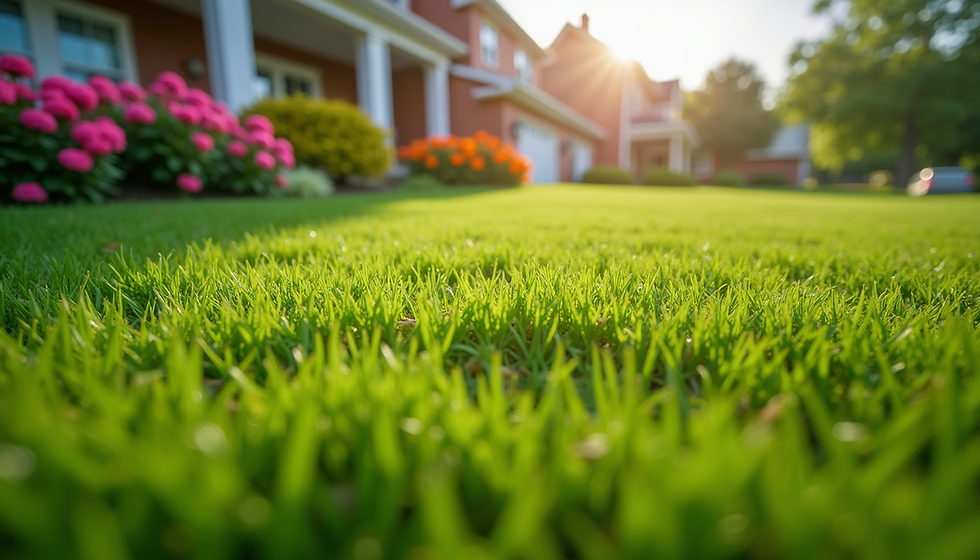What to Plant & When in Ohio: A Seasonal Guide for Seeds and Bulbs
- Timothy Jacobs
- Mar 15
- 3 min read
Planting seeds and bulbs at the right time can make a world of difference in how well your garden thrives, especially in Ohio’s variable climate. From early spring greens to fall-blooming bulbs, understanding the optimal planting window ensures you enjoy a healthy, vibrant display throughout the year. Below is an educational overview to help you know what to plant and when.
1. Understanding Ohio’s Hardiness Zones
Most of Ohio falls under USDA Hardiness Zones 5 and 6. These zones are defined by average annual minimum temperatures and help determine which plants can survive the winter. While local microclimates and weather patterns can vary, knowing your zone is a great starting point for selecting the right seeds and bulbs.
Zone 5: Last spring frost often occurs around late April to early May; first fall frost typically arrives in mid- to late October.
Zone 6: Last spring frost can be mid- to late April; first fall frost is usually in late October.
It’s always a good idea to keep an eye on local forecasts, as Ohio weather can be unpredictable.
2. Early Spring (March–April)
Cool-Season Vegetables and Annuals
Peas, Lettuce, Spinach, Kale: These can handle cooler soil temperatures, so sow seeds outdoors as soon as the ground can be worked—often late March to early April.
Carrots, Radishes, Beets: These root crops also thrive in cooler conditions and can be sown directly into the ground during this period.
Early Spring Bulbs (Planted the Previous Fall)
Daffodils, Tulips, Hyacinths: While these bulbs should be planted in autumn to bloom in spring, early spring is when you’ll see the results. If you missed the fall planting window, it’s best to wait until next autumn to plant new bulbs for spring blooms.
3. Late Spring (May–June)
Warm-Season Vegetables
Tomatoes, Peppers, Cucumbers, Beans: After the threat of frost has passed (usually mid-May in much of Ohio), plant or transplant these heat-loving crops outdoors.
Herbs: Basil, Parsley, and Dill can also go outside once nighttime temperatures consistently stay above 50°F.
Annual Flowers
Petunias, Zinnias, Marigolds, Impatiens: These favorites add color to your garden and are typically planted in late spring when the soil warms. Consider starting some indoors in early spring if you want a head start.
4. Summer (June–July)
Succession Planting
If you’re harvesting early crops like lettuce or radishes in June, you can replant with more short-season vegetables or quick-blooming annuals. This ensures you continue to get fresh produce and flowers through the summer.
Bulbs for Late Summer Color
Lilies, Gladiolus: These can be planted in late spring to early summer for mid- to late-summer blooms. They thrive in full sun and well-drained soil.
5. Fall (September–October)
Autumn Bulb Planting
Tulips, Daffodils, Crocuses: Plant these bulbs roughly six to eight weeks before the ground freezes (often late September through October). This allows the bulbs to establish roots before winter sets in.
Alliums, Hyacinths: Also fall-planted for spring blooms, providing unique shapes and fragrances for your garden.
Cool-Season Vegetables
Spinach, Lettuce, Kale: As summer heat wanes, these can be replanted for a fall harvest. Just be mindful of the first expected frost date in your region.
6. Perennial Flowers for Year-Round Beauty
Coneflowers (Echinacea), Black-Eyed Susans (Rudbeckia), Bee Balm: Typically planted in spring or early fall, these hardy perennials come back each year and often attract pollinators like bees and butterflies.
Hostas, Daylilies, Peonies: Spring or early fall planting is ideal for root establishment. Make sure to give each plant the space and soil conditions it needs to thrive.
7. Additional Tips for Successful Planting
Soil PreparationGood soil is essential for seed germination and bulb development. Mix in compost or well-rotted manure to improve soil structure and fertility.
MulchingA layer of organic mulch helps retain moisture, suppress weeds, and moderate soil temperature—beneficial for both seeds and bulbs.
Proper WateringNewly planted seeds and bulbs need consistent moisture until they’re well-established. Avoid over-watering, which can lead to rot or fungal issues.
FertilizingConsider a balanced, slow-release fertilizer at the time of planting. For bulbs, using a bulb-specific fertilizer can promote strong root and bulb development.
Plan for SuccessKeep a gardening calendar or journal to track planting dates, varieties, and results. This helps you fine-tune your approach each year and account for Ohio’s shifting weather patterns.
At Lawn Harmony Landscaping LLC, we’re here to help you make the most of Ohio’s growing seasons. From flower bed preparation and mulching to overall lawn maintenance, our team provides reliable, high-quality services tailored to your property’s needs.
Phone: 614-425-9789
Email: LawnHarmonyOhio@gmail.com
Website: LawnHarmonyLLC.com
Facebook: facebook.com/LawnHarmonyLLC
Whether you’re planting a spring vegetable garden, adding summer color with annuals, or planning ahead for fall bulbs, a well-timed approach will reward you with a healthy, thriving landscape. Here’s to a successful gardening season in Ohio!











Comments